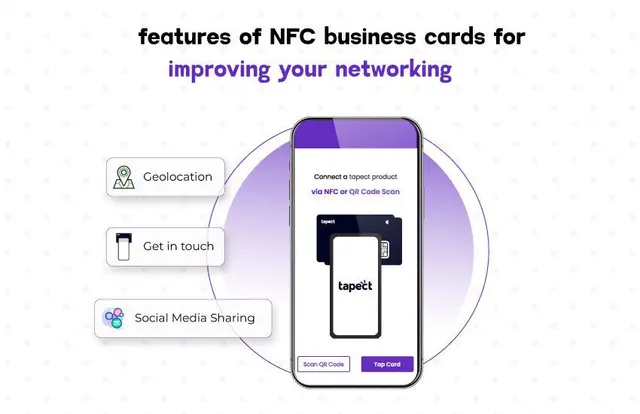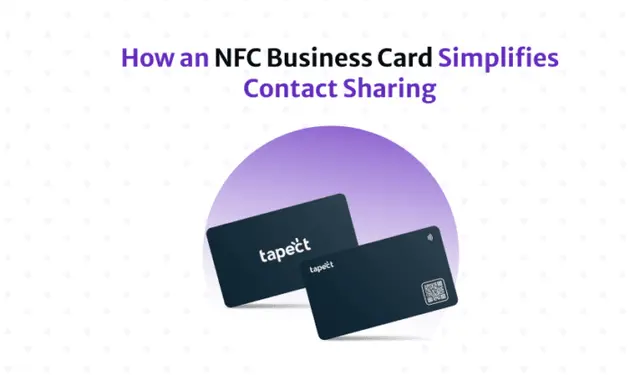Choosing NFC (Near Field Communication) business cards over traditional ones represents a significant leap forward in the realm of networking and professional representation. In an increasingly digital world where first impressions are crucial and efficiency is valued, NFC business cards offer a plethora of advantages that set them apart from their traditional counterparts. From ease of use to enhanced interactivity and sustainability, NFC business cards redefine how professionals connect and engage. This article explores in detail why NFC business cards are a superior choice in today’s competitive business landscape.
Ease of Exchange
Traditional business cards rely on physical contact and manual exchange, which can be cumbersome and prone to errors or loss. NFC business cards, on the other hand, streamline this process by allowing recipients to simply tap their smartphones against the card to retrieve contact information instantly. This frictionless exchange not only saves time but also ensures accuracy in transferring details, reducing the risk of data entry mistakes common with traditional cards.
Interactive and Engaging
NFC technology enables business cards to offer more than just contact information. They can link directly to websites, portfolios, social media profiles, and even multimedia content like videos or presentations. This interactivity enhances engagement with potential clients or contacts, making a lasting impression that goes beyond a printed name and number. Such dynamic capabilities showcase innovation and tech-savviness, which can be a significant advantage in competitive industries.
Versatility and Customization
Unlike traditional cards that are static in nature, NFC business cards are highly versatile and customizable. They can be programmed and reprogrammed to update information or change the linked content as needed, providing flexibility in adapting to new roles or contact details. This versatility allows professionals to maintain relevance and ensure that their business cards always reflect the latest information and branding.
Environmentally Friendly
In an era where sustainability is increasingly important, NFC business cards offer an eco-friendly alternative to traditional paper cards. By reducing the need for paper production and minimizing waste, NFC cards contribute to environmental conservation efforts. Additionally, their longevity and reusability further support sustainability goals by eliminating the frequent disposal of outdated or unused paper cards.
Data Analytics and Insights
NFC business cards can provide valuable analytics and insights into how recipients interact with the shared content. Through analytics platforms, professionals can track metrics such as the number of taps, which links are accessed most frequently, and the geographical locations of interactions. This data-driven approach offers valuable feedback for refining marketing strategies and understanding audience preferences, empowering professionals to make informed decisions.
Enhanced Security
Traditional business cards are vulnerable to physical loss or theft, potentially compromising sensitive contact information. NFC business cards mitigate these risks by encrypting data and requiring proximity for access, enhancing security and protecting privacy. This feature is particularly valuable in industries where confidentiality and data protection are paramount concerns, providing peace of mind to both cardholders and recipients.
By adopting NFC business cards, professionals demonstrate a forward-thinking and tech-savvy image. This modern approach to networking not only distinguishes individuals from their peers but also positions them as early adopters of innovative technologies. In industries driven by technological advancements, such as IT, marketing, or creative fields, this image can be a decisive factor in establishing credibility and attracting opportunities.
Convenience and Integration
NFC technology is widely supported by modern smartphones, ensuring compatibility across various devices and platforms. This universal support enhances the convenience of using NFC business cards, as recipients do not need to install specific apps or devices to access shared information. The seamless integration with existing digital ecosystems simplifies the networking process and encourages more frequent interactions between professionals.
Cost-effectiveness
While the initial investment in NFC business cards may be higher than traditional cards, their long-term cost-effectiveness is notable. NFC cards eliminate recurring expenses associated with printing and replenishing paper cards, as well as reduce overhead costs related to data management and CRM integration. Over time, the savings accrued from reduced printing and administrative tasks can outweigh the initial investment, making NFC cards a financially sound choice for businesses.
Differentiation and Memorability
In a competitive market, standing out is essential for making a memorable impression. NFC business cards differentiate professionals by offering a unique and memorable interaction experience. The novelty of tapping a card to instantly access multimedia content or detailed information leaves a lasting impression on recipients, increasing the likelihood of follow-up and fostering stronger business relationships.
Conclusion
NFC business cards represent a transformative evolution in networking and professional branding. Their ability to streamline information exchange, enhance interactivity, support sustainability efforts, and provide valuable insights underscores their superiority over traditional paper cards. As technology continues to shape the way we connect and communicate, NFC business cards emerge as a pivotal tool for modern professionals seeking to leverage innovation and efficiency in their networking endeavors. By embracing NFC technology, professionals not only elevate their personal brand but also adapt to the digital landscape of tomorrow’s business world.


